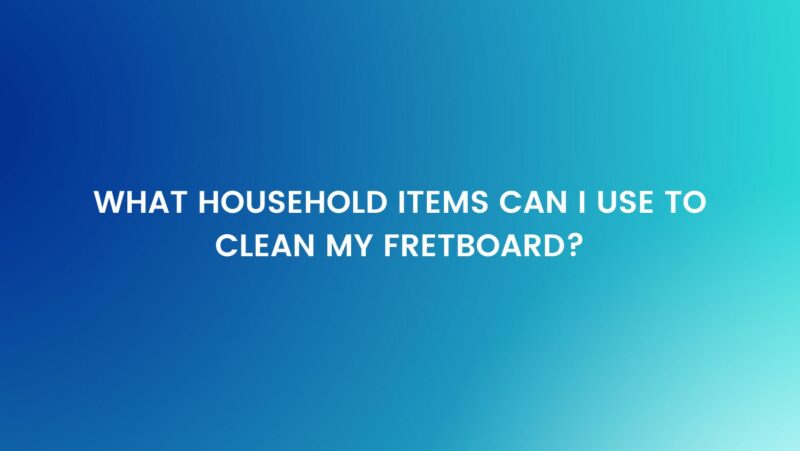Cleaning your guitar’s fretboard is an essential part of maintaining your instrument’s playability and prolonging its lifespan. While there are many specialized fretboard cleaning products available on the market, you can also achieve excellent results using common household items. In this comprehensive guide, we’ll explore a range of household items you can use to clean your fretboard effectively, saving you money and ensuring your guitar looks and plays its best.
Important Note: Before using any household items on your guitar’s fretboard, check your guitar’s specific care recommendations and finish type. Certain household items may not be suitable for all types of fretboards, and using the wrong materials could potentially damage your instrument.
- Soft Lint-Free Cloths: Soft lint-free cloths are one of the most basic yet essential tools for cleaning your fretboard. They are perfect for wiping down the fretboard after cleaning to remove any residual moisture or cleaning solutions. Ensure the cloth is clean and free of debris before use.
- Warm Water: Warm water is a gentle and effective way to clean most fretboards. Dampen a soft cloth with warm water and use it to wipe down the fretboard. It’s particularly useful for removing dirt and grime that has accumulated over time. Just make sure the cloth is only slightly damp, not soaking wet, to avoid excessive moisture contact with the wood.
- Mild Dish Soap: For stubborn grime or oily residue on your fretboard, you can mix a small amount of mild dish soap with warm water. Dip a cloth into the soapy solution, wring it out well, and use it to gently clean the fretboard. Afterward, wipe the fretboard with a damp cloth to remove any soap residue and dry it thoroughly.
- Toothbrush with Soft Bristles: A soft-bristled toothbrush can be an effective tool for cleaning the area around the frets and in between them. Use it to gently scrub away dirt and debris. Make sure the toothbrush is clean and dry before use, and avoid excessive pressure to prevent scratching.
- White Vinegar: White vinegar can help remove stubborn stains and residue from your fretboard. Mix a small amount of white vinegar with an equal amount of water and apply it sparingly to a soft cloth. Use this cloth to clean the affected areas, and then wipe the fretboard with a damp cloth to remove any vinegar residue.
- Lemon Juice and Baking Soda: If you have a maple fretboard and need a mild abrasive cleaner, you can make a paste by mixing lemon juice and baking soda. Apply the paste to a soft cloth and gently rub it on the fretboard. Be careful not to scrub too hard, as you don’t want to damage the wood. Rinse with warm water and dry thoroughly.
- Rubbing Alcohol (Isopropyl Alcohol): Isopropyl alcohol can be useful for removing sticky residue left by tape or stickers. Apply a small amount to a cloth and gently rub the affected area. Make sure to rinse the fretboard with warm water afterward and dry it thoroughly.
- Fretboard Conditioner (Optional): If you want to condition your fretboard after cleaning, you can make a homemade fretboard conditioner by mixing a small amount of mineral oil with a few drops of lemon oil. Apply it sparingly to the fretboard, let it sit for a few minutes, and then wipe off any excess with a clean cloth.
Conclusion
Maintaining your guitar’s fretboard doesn’t have to involve expensive specialized products. By using common household items like soft cloths, warm water, mild dish soap, white vinegar, and others mentioned above, you can effectively clean your fretboard, removing dirt, grime, and stains, while also preserving its condition and appearance. Remember always to exercise caution, use these household items sparingly, and consult your guitar’s manufacturer guidelines for care and maintenance, especially if you have an exotic or sensitive wood fretboard. Proper care will ensure that your guitar continues to produce beautiful music for years to come.

